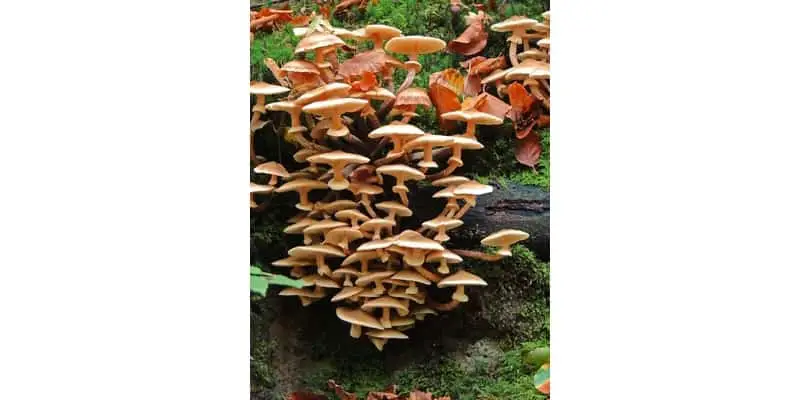Fungi are everywhere, and you have probably heard or come across that term on more occasions than one. Although it’s easy to think we know everything about fungi, the reality is that we probably do not. But it’s not that difficult to learn.
Fungi are a taxonomic kingdom of both single cell and multicellular eukaryotic organisms with more than 144,000 classified species and an estimated 1.5 million species on earth. Fungi are classified into macrofungi, which are larger representations of fungi like mushrooms, and microfungi, which which are smaller representations of fungi like yeast and molds.
In this post, you will find everything you need to know about fungi, what are they, how they produce energy, how we classify them, their importance, and so much more. Scroll down to find out more about these relatively tiny organisms with a vital role in the ecosystem.
What are Fungi?
Fungus (plural: fungi) is a term that refers to a kingdom of single- or multicellular eukaryotic organisms that are heterotrophs and have a significant role in the nutrient cycling in the ecosystem.
The term eukaryote is used to define any cell or an organism with a clearly defined nucleus. The nucleus in eukaryotic organisms is enclosed within membranes, unlike in prokaryotic counterparts, which have no membrane-bound organelles. Additionally, a heterotroph is any organism that is unable to produce its own food and derives its intake of nutrition from other sources.
More precisely, fungi are organisms with a clearly defined nucleus and without the ability to produce their own food. Although more people refer to them as “plants,” they are not technically a part of the plant world.
The fungi kingdom is massive, and it includes approximately 144,000 known species, but the total number (including those that are yet to be identified) could be between 1.5 million and 3.8 million. That’s why fungi are some of the most widely distributed organisms on the planet, and they bear immense environmental and medical performance.
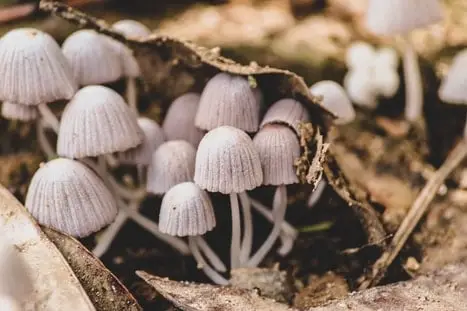
The vegetative or living part of the fungus is called mycelium, and it is comprised of hyphae i.e., a web of tiny filaments. The mycelium is usually hidden in the wood, soil, or another food source (remember, fungi can’t make food on their own), and it can be short or incredibly long.
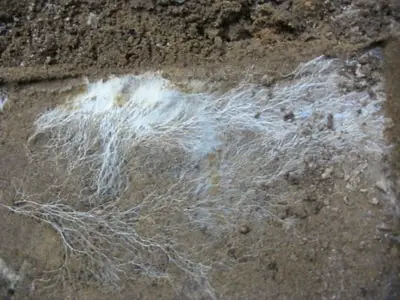
The branching hyphae add extra length (over 1km or half a mile in some cases) to the mycelium. These tiny webs remain unseen until they develop fruiting bodies such as mushrooms, brackets, truffles, birds’ nests, corals, just to name a few. So, if a mycelium produces fruiting bodies of microscopic size, the fungi would remain completely unnoticeable.
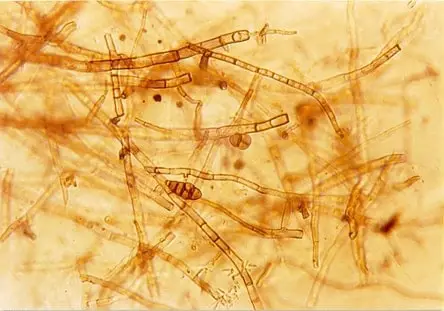
Taxonomy: How are Fungi Classified
There are thousands of fungi species across the globe, but we can classify them into the following taxonomic list:
- Phylum Ascomycota – also known as sac fungi, usually found in dry land around the world in environments ranging from temperate and tropical forests to grasslands.
- Phylum Basidiomycota – large and diverse phylum of fungi that includes jelly and shelf fungi, certain yeasts, rusts, and smuts.
- Phylum Blastocladiomycota – aquatic fungi.
- Phylum Chytridiomycota – found in freshwater and wet soils.
- Phylum Glomeromycota – live in close association with the roots of trees and plants.
- Phylum Microsporidia – parasitic fungi found primarily in cells of the gut epithelium of insects and muscles and skin of the fish.
- Phylum Neocallimastigomycota – anaerobic fungi that inhabit the gastrointestinal tract of herbivores.
Remember, each of these categories has its subspecies, and there are thousands of fungi that are yet to be discovered and identified.
Common Types of Fungi
Layman classification of fungi is simple and includes mushrooms, yeast, truffle, mold, and toadstools. As seen above, there are multiple families of fungi, and each of them has hundreds or thousands of members.
The most well-known fungi belong to subkingdom called Dikarya, which includes all mushrooms, yeast, most pathogens, and molds. This subkingdom is broken into two families i.e., phyla Ascomycota and Basidiomycota. Ascomycota includes lichens, molds, unicellular yeasts, truffles, among others. Good examples of this phylum are Penicillium and Aspergillus. On the flip side, the Basidiomycota includes common mushrooms, rust, and smut fungi, as well as many grain pathogens.

When talking about some of the most common types of fungi, it’s also important to mention Rhizopus stolonifer black bread mold from the phylum Glomeromycota. All fungi can be divided into several types, such as multicellular filamentous molds, macroscopic filamentous fungi with large fruiting bodies i.e., mushrooms and single-celled microscopic yeasts.

How do Fungi Produce Energy?
Fungi are heterotrophs, as mentioned above, meaning they get the energy they need to live and survive from other organisms. Similar to animals, fungi extract the energy stored in the bonds of organic compounds such as proteins and sugar from dead or living organisms.
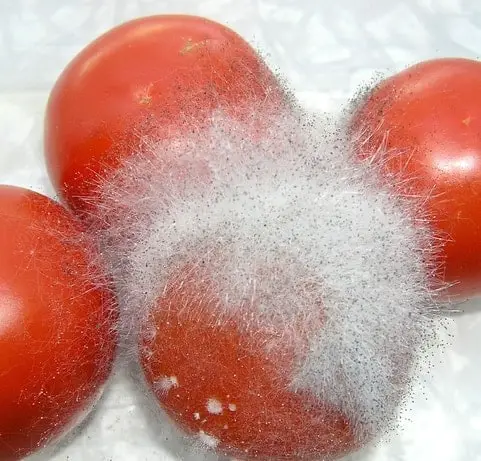
In other words, these organisms have developed different strategies that help them extract organic matter, but we can classify them into two main groups: saprotrophs which extract compounds from dead organisms, and symbionts which obtain carbon from living organisms. That’s not all; some types of fungi even attack aggressively small living organisms to extract organic matter and produce energy. These fungi are designated as carnivorous.
Even though we can categorize fungi in different types based on the way they obtain carbon, it’s worth noting that they may act like all of them (saprotrophs, symbionts, and carnivores) in different stages of their lifecycle or as they interact with other organisms. A good example is necrotrophic fungi, which act as both symbionts and saprotrophs i.e., they infect a living organism; they slowly kill, and continue to consume its organic matter.
Distinguishing Features
Fungi are often compared or even mistaken for other organisms, such as plants and bacteria, but they are not the same. Most people consider mushrooms plants, although they’re technically not a part of the plant world.
When it comes to fungi and bacteria, their prime difference is in the fact fungi are eukaryotic, while bacteria are prokaryotic organisms. While bacteria can be both autotrophs and heterotrophs, fungi are only the latter. Moreover, fungi have a well-defined nucleus surrounded by the nuclear membrane, while bacteria lack a nuclear membrane that encloses the nucleus.
When comparing bacteria and fungi, it’s also worth noting bacterial cells lack organelles while fungi have them. While bacteria are asexual, fungi reproduce both sexually and asexually. Plants and fungi have some major similarities on the cellular level. For example, they have cell walls, membrane-bound nuclei, organelles, including mitochondria, among others.
Their differences are also numerous. For instance, the cell wall of plants is made of cellulose, pectin, agar, hemicelluloses, while the fungal cell wall is comprised of chitin, glucans, and proteins. Fungal cells do not contain chloroplasts like plant cells. Chloroplasts are the organelle that allows plants to turn sunlight into energy.
How do Fungi Reproduce?
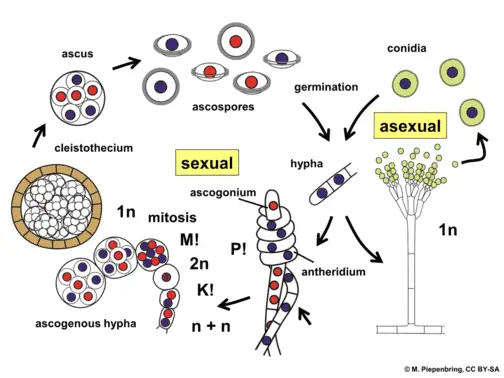
Fungi enter the reproduction phase after the intensive growth stage. The reproductive phase starts with the formation and release of spores, which will be discussed below. Fungi reproduce in a sexual and asexual manner. Perfect fungi reproduce both sexually and asexually while imperfect fungi only asexually.
Sexual Reproduction
Sexual reproduction is responsible for genetic variation in the fungi kingdom, and it allows these organisms to adapt to their environment. Unlike in other eukaryotes, the nuclear membrane remains intact during sexual reproduction, but its integrity may vary between species. Three sequential stages are present in the sexual reproduction of fungi:
- Plasmogamy – the fusion of two protoplasts i.e., contents of two cells. This phase brings together two compatible haploid nuclei because prior to that diploid chromosomes are pulled apart into a single set of chromosomes i.e., a haploid state.
- Karyogamy – involves the fusion of the haploid nuclei and the formation of a diploid nucleus. The cell formed during the karyogamy stage is called a zygote. In some fungi, karyogamy follows plasmogamy immediately, but in others these stages are separate.
- Meiosis – follows and restores the haploid phase.
NOTE: A haploid cell is a cell that contains a single set of chromosomes, whereas diploid cells contain two sets of chromosomes.
Keep in mind that two mating types are present in fungi. Homothallic or self-fertile are those fungi where both mating types are present in the same mycelium. On the flip side, heterothallic fungi require two different, but compatible mycelia for sexual reproduction.
Asexual Reproduction
The easiest form of asexual reproduction of fungi is fragmentation, a process wherein an organism is divided into fragments. More precisely, mycelium or the thallus (body of the fungi) separates into pieces. Each fragment grows up to become a matured individual identical to its parents. In this case, fragments of hyphae produce new colonies.
Fungi can also reproduce by budding and producing spores. The budding involves the formation of a bulge on the side of the cell and the mitotic divide of the nucleus. This leads to the detachment of the bud from the mother cell. The formation of asexual spores is one of the most common ways of asexual reproduction. The spores are produced by one parent and grow up to be identical to it.
Life Cycle and Lifespan
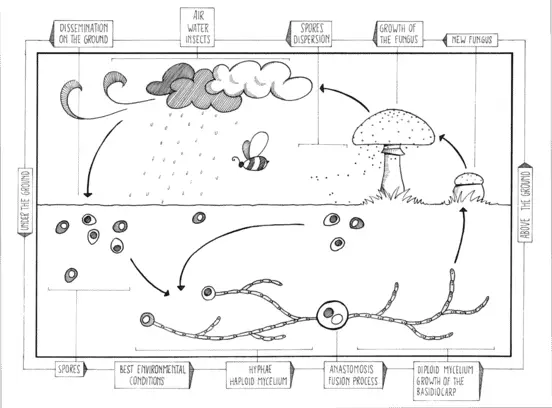
Generally speaking, fungi have a relatively short lifespan, which differs from one species to another. Some types of fungi may live as short as a day, while others may last a week or up to a month.
The lifecycle of fungi begins as a spore and lasts until germination. We will discuss spores in greater detail further in this post. In a nutshell, they are produced by mature fungi and released into the environment where they divide and grow into hyphae, which are composed of the haploid cells.
Speaking of the lifecycle of fungi, in sexually reproducing organisms, the haploid and diploid phases alternate. The haploid phase ends with nuclear fusion, while the diploid phase starts with the formation of the zygote. The zygote is, actually, a diploid cell created by the fusion of the two haploid sex cells.
Through the process of meiosis or reduction division, the haploid number of chromosomes is restored, which leads to the initiation of the haploid phase and the ensuing production of gametes. All structures, except zygote, are haploid in most species of fungi. During the formation of the zygote, nuclear fusion also takes place, followed by the above-mentioned meiosis.
It is worth mentioning that the haploid and diploid phases and processes associated with them may vary and contain small changes from one species to another.
When two opposite strains (+/-) come into contact, then the two different cell types fuse to form a cell with two nuclei (nuclear fusion described above). The fused cell grows in the fruiting body i.e., the mushroom. In other words, the mushroom’s body is comprised of cells with two nuclei.
The nuclei in these cells go through a series of divisions and fusions to reproduce sexually and create spores. For example, nuclei fuse to create diploid cells that undergo meiosis to create haploid cells, which are, in fact, the spores produced by fungi. Although it may seem complex, the lifecycle of fungi is quite simple (divisions and fusions to produce different cells and continue the cycle), but some stages may vary among species.
Habitat
Fungi can live in just about any environment you can think of, although most of them are found on the land. The ideal land-bound habitat for fungi is a soil abundant in organic matter furnishes. In fact, only a small number of fungi grow in dry areas or habitats with little to no organic matter.
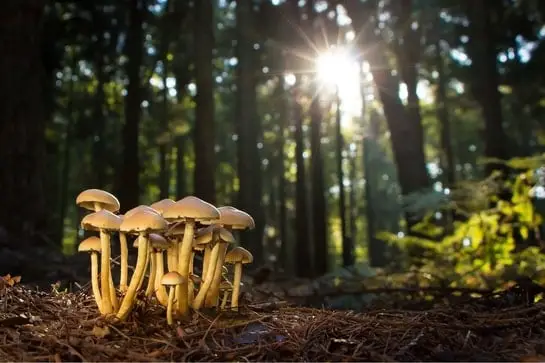
You can find fungi in all parts of the world, whether it’s a tropical or temperate region. As long as there is enough moisture that allows them to grow, fungi can survive in that specific region.
Interestingly, there are also fungi in the Arctic and Antarctic, although they are rare and not easy to find. To survive in these cold temperatures, fungi live in symbiosis with algae in the form of lichens.
As mentioned above, fungi can live in different types of habitat, including water. When it comes to water, fungi prefer freshwater or marine environments.

Freshwater fungi prefer clean and cool water because they don’t really tolerate a high level of salinity. But, it’s also possible to find fungi in brackish waters and polluted streams, although not many species can survive and thrive in those areas.
To sum up, ideal habitat may depend on one species to another. That said, most fungi prefer mineral-rich soils with a lot of organic matter. Those that live in water prefer a cool and clean aquatic environment.
Fungi and the Ecosystem
Fungi are incredibly important for the ecosystem balance. They can thrive in different kinds of habitat and conditions, and although they are not large in size, fungi are major decomposers. That means they break down organic matter, which wouldn’t be recycled otherwise. Most fungi are able to use different types of organic matter such as cellulose, lignin, and other polysaccharides which have been added to the water or soil by dead vegetation.
The roles of fungi in the ecology and their ecosystem can be described through functions such as:
- Recycling
- Decomposing
- Symbiotic relationships
The term symbiosis refers to the ecological interaction between two different organisms that live together in a close physical association to the advantage of both organisms involved. Fungi have the following relationships in nature:
Parasitic relationship – parasitic fungi live in or on other organisms from which they get nutrients. These fungi also produce enzymes that break down tissues of the hosts. Since they may cause illnesses, parasitic fungi can eventually kill their host and are a major cause of disease in agricultural plants.
Mutualism – this term refers to those symbiotic relationships where both organisms have an advantage from this form of a “union.” The most common symbiotic relationships of this kind are lichen and mycorrhiza. A lichen is a symbiosis between a fungus and photosynthetic organisms, such as alga.
In this relationship, fungus benefits from the constant supply of the nutrients, while alga benefits from the water and nutrients absorbed by the fungus. On the other hand, mycorrhiza is a symbiosis between a fungus and a plant i.e., the fungus grows on the root of the plant. In this relationship, plant benefits from the fact mycelia promote absorption of water and nutrients from the soil while fungus has easy access to food.
This symbiotic relationship is also considered a natural biofertilizer. It’s also worth noting that fungi can have mutualistic relationships with insects as well e.g., with leafcutter ants. In this symbiotic relationship, fungi get a safe place to live while ants feed fungi to their larvae.
What are Spores and their Function?
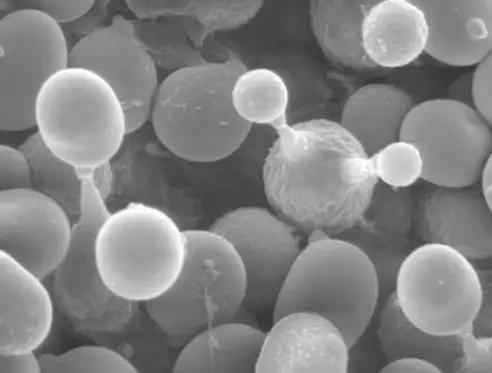
Spores are microscopic biological particles that allow fungi to reproduce. We could easily compare them with seeds in plants. Fungi begin their life as a spore released by adult cells, and they go on to release spores later as well. Produced by fruiting bodies such as the edible portion of a mushroom, these spores germinate and grow into new, adult fungi under suitable conditions in terms of temperature, moisture, and availability of organic matter i.e., food.
Since spores are dispersal structures of fungi, their role is also similar to that of pollen in the plants i.e.; they serve for dispersal from one environment to the other. Spores from fungi are a relatively significant biological component of the air we breathe.
Not all fungal spores are equal; they vary in shape, release method, size, and color. Some fungi release spores throughout the year while others only release spores seasonally. Spores have important functions in the reproduction and dispersal of fungi in the environment. That’s why they also have an impact on the air we breathe, and even our health. The health aspect is discussed further in the post.
What Illnesses can Fungi Cause?

Some figures show that fungal diseases affect over a billion people and kill over 1.5 million people in the world. That being said, illnesses caused by fungi are still a neglected subject by public health authorities, although deaths associated with these diseases are largely preventable. The most common fungal diseases include:
- Fungal nail infections – infections in fingernails and toenails.
- Vaginal candidiasis – caused by yeast Candida.
- Ringworm – fungal skin infection that tends to look like a circular rash.
People with a weakened immune system may develop the following fungal illnesses:
- Aspergillosis – caused by Aspergillus, a common mold living indoor and outdoor.
- Candidiasis – can cause infections if it grows out of control or if it reaches deep in the body.
- Candida Auris infection – multidrug-resistant fungus found in healthcare settings.
- Cryptococcus neoformans infection – can infect the brain and cause meningitis; it’s more common in people with HIV/AIDS.
- Invasive candidiasis – an infection that affects blood, brain, heart, eyes, bones, and other parts of the body in hospitalized patients.
- Pneumocystis pneumonia – infection caused by fungus Pneumocystis jirovecii.
- Mucormycosis – rare and serious infection caused by certain molds.
- Talaromycosis – caused by a fungus that lives in southern China, eastern India.
Other fungal illnesses include mycetoma, sporotrichosis, fungal eye infections, histoplasmosis, and others.
Fungi and Medicine
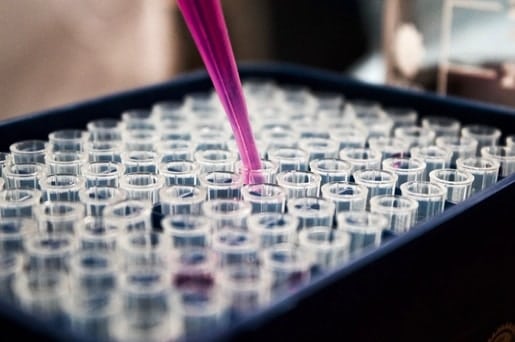
Although fungi can cause some illnesses, they have also made significant contributions to the world of medicine. For example, penicillin is based on fungi and paved the way for the rise of antibiotics that millions of people use to treat infections.
That happens because fungi naturally produce antibiotics to kill or inhibit the growth of bacteria. Also, fungi are included in the industrial processing of 10 to 20 most profitable products in human medicine. When it comes to uses of fungi in medicine, include medications such as rosuvastatin for cholesterol reduction, micafungin, an antifungal agent, mycophenolate, which prevents tissue rejection.
Some medications for other health problems, such as migraines, are also made of fungi. Further research on fungi and their use for the formulation of medications are still ongoing.
Brief History
Fungi probably appeared billions of years ago, but their fossil record is somewhat unclear. In 1998, scientists discovered that fungi split from animals about 1.538 billion years ago i.e., nine million years after plants did. Until the late 20th century, fungi were classified as plants and were divided into four groups: Phynomycetes, Ascomycetes, Basidiomycetes, and Deuteromycetes.
As the technology and science advanced, scientists started realizing there are many other families of fungi and determined they are not plants.
When we’re talking about fungi and history, the most relevant pieces of information include:
- It is believed that Pope Clement VII died after being poisoned by the death cap mushroom in 1537.
- Mycology, a study of fungi, became systematic after the development of a microscope in the 17th century. For more on the history of microscopes see The First Microscope to Modern Microscopes: Evolution and History of Microscopes.
- Heinrich Anton de Bary is considered a founding father of plant pathology and modern mycology.
- Around 1650s humans start cultivating mushrooms. Although people have been using fungi for centuries it wasn’t until the late 1600s and early 1700s when they learned how to cultivate them.
- Pier Antonio Micheli’s Nova Plantarum genera from 1792 are considered the seminal work in the development of mycology because Micheli observed spores and found they can grow into identical organisms from which they originated.
- In 1790 Christian Hendrik Persoon was the one who first classified mushrooms.
- In 1821 Elias Magnus Fries elaborated the classification of fungi using microscopic characteristics and spore color that is still used for taxonomy today.
- In 1857 Louis Pasteur discovered that yeast was responsible for conversion of carbs to alcohol in a process we now refer to as fermentation.
- In 1879 the first single yeast cell was isolated.
- In 1928 Alexander Fleming discovered penicillin made from Penicillium notatum mold.
Random Facts!
- Fungi release a large number of spores in the air every year, thus contributing up to 50 tons of particulates.
- Some fungi are so toxic they can cause instant death in humans and animals.
- Honey mushroom, a type of fungus, is one of the largest living organisms on the planet, but it kills trees as it spreads.
- Fungi can be incredibly resilient and survive sub-zero temperatures.
- Fungi mycelium is like a natural internet where individual tips branching out to explore and the whole “network” benefits from advantageous discoveries.
Takeaways
In this post, we discussed fungi, how we divide them, how they reproduce, and so much more. Remember, although they’re everywhere, there is a lot we still need to learn about fungi and their families, subtypes, and species. Fungi have given us the world changing drug Penicillin and continue to marvel scientists by their adaptability and resiliency in this unforgiving world.
References
- https://www.britannica.com/science/eukaryote
- https://www.britannica.com/science/fungus
- https://biodifferences.com/difference-between-bacteria-and-fungi.html
- https://www.earth.com/earthpedia-articles/plant-cells-and-fungus-cells/
- https://courses.lumenlearning.com/boundless-biology/chapter/characteristics-of-fungi/
- https://www.ncbi.nlm.nih.gov/pmc/articles/PMC4717633/
- https://www.ncbi.nlm.nih.gov/pmc/articles/PMC5753159/
- https://www.cdc.gov/fungal/diseases/index.html
- https://www.researchgate.net/publication/302358355_Fungi_in_Medicine
- https://www.medicalnewstoday.com/articles/158134#uses
- https://www.eurekalert.org/pub_releases/2006-10/uom-dae102006.php

